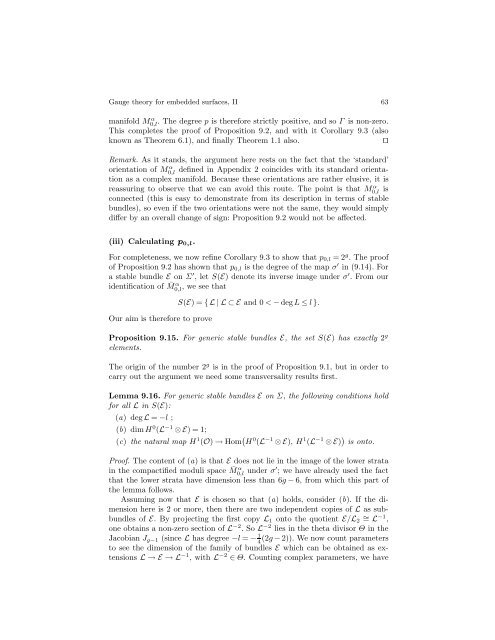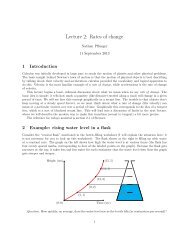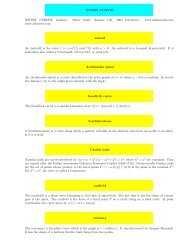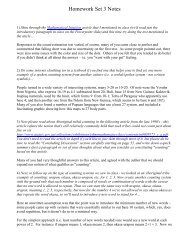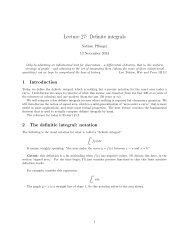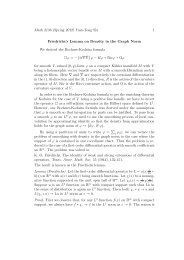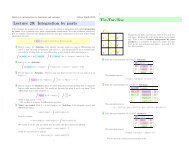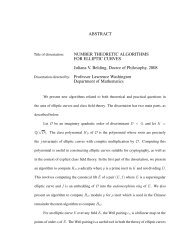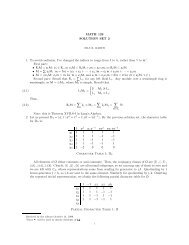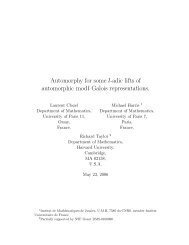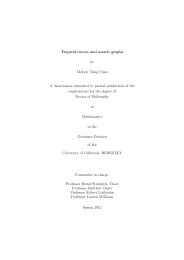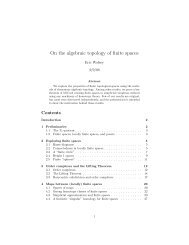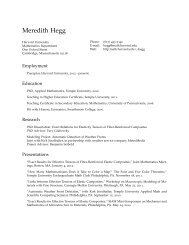Gauge theory for embedded surfaces, II
Gauge theory for embedded surfaces, II
Gauge theory for embedded surfaces, II
Create successful ePaper yourself
Turn your PDF publications into a flip-book with our unique Google optimized e-Paper software.
<strong>Gauge</strong> <strong>theory</strong> <strong>for</strong> <strong>embedded</strong> <strong>surfaces</strong>, <strong>II</strong> 63<br />
manifold M α 0,l . The degree p is there<strong>for</strong>e strictly positive, and so Γ is non-zero.<br />
This completes the proof of Proposition 9.2, and with it Corollary 9.3 (also<br />
known as Theorem 6.1), and finally Theorem 1.1 also. ⊓⊔<br />
Remark. As it stands, the argument here rests on the fact that the ‘standard’<br />
defined in Appendix 2 coincides with its standard orienta-<br />
orientation of M α 0,l<br />
tion as a complex manifold. Because these orientations are rather elusive, it is<br />
reassuring to observe that we can avoid this route. The point is that M α 0,l is<br />
connected (this is easy to demonstrate from its description in terms of stable<br />
bundles), so even if the two orientations were not the same, they would simply<br />
differ by an overall change of sign: Proposition 9.2 would not be affected.<br />
(iii) Calculating p0,l.<br />
For completeness, we now refine Corollary 9.3 to show that p0,l =2 g . The proof<br />
of Proposition 9.2 has shown that p0,l is the degree of the map σ ′ in (9.14). For<br />
a stable bundle E on Σ ′ ,letS(E) denote its inverse image under σ ′ . From our<br />
identification of ¯ M α 0,l ,weseethat<br />
Our aim is there<strong>for</strong>e to prove<br />
S(E)={L|L⊂E and 0 < − deg L ≤ l }.<br />
Proposition 9.15. For generic stable bundles E, thesetS(E)has exactly 2 g<br />
elements.<br />
The origin of the number 2 g is in the proof of Proposition 9.1, but in order to<br />
carry out the argument we need some transversality results first.<br />
Lemma 9.16. For generic stable bundles E on Σ, the following conditions hold<br />
<strong>for</strong> all L in S(E):<br />
(a) degL=−l ;<br />
(b) dim H0 (L−1 ⊗E)=1;<br />
(c) the natural map H1 (O) → Hom H0 (L−1 ⊗E),H1 (L−1⊗E) is onto.<br />
Proof. The content of (a) isthatEdoes not lie in the image of the lower strata<br />
in the compactified moduli space ¯ M α 0,l under σ′ ; we have already used the fact<br />
that the lower strata have dimension less than 6g − 6, from which this part of<br />
the lemma follows.<br />
Assuming now that E is chosen so that (a) holds, consider (b). If the dimension<br />
here is 2 or more, then there are two independent copies of L as subbundles<br />
of E. By projecting the first copy L1 onto the quotient E/L2 ∼ = L−1 ,<br />
one obtains a non-zero section of L−2 .SoL−2lies in the theta divisor Θ in the<br />
Jacobian Jg−1 (since L has degree −l = − 1(2g<br />
− 2)). We now count parameters<br />
4<br />
to see the dimension of the family of bundles E which can be obtained as extensions<br />
L→E→L−1 ,withL−2∈Θ. Counting complex parameters, we have


